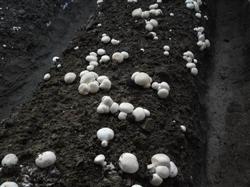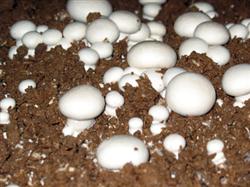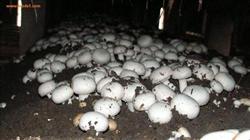Planting techniques of Pleurotus ostreatus

Pleurotus ostreatus has the characteristics of good quality, good taste, low investment and high benefit, and has a broad market prospect, with an economic benefit of 12000 yuan per 667m2. Its cultivation techniques are as follows: first, prepare culture materials and formula, according to the calculation of cultivation 100m2, it is necessary to prepare high quality dry wheat straw 1500kg, dried cow and horse manure 600kg, phosphate fertilizer 50kg, urea 15kg, gypsum powder 25kg, calcium carbonate 12.5kg. 2. Stacking and turning of culture materials (1) the whole process of stacking culture materials takes about 25 days, and the construction time is 5 days before sowing. (2) stacking and turning. The stack of cultivated materials is selected in the place where there is no water storage, no pollution and water source. 3 days before the construction of the pile, the wheat straw is soaked and removed, layer by layer is evenly sprinkled with 1.5 lime powder, and then the wheat straw pile is grown in a square pile, layer by layer, and the horse dung soil is pre-wet at the same time. When building the pile, first spread a layer of wet wheat straw on the yard with a thickness of 15-20cm, and then sprinkle a layer of dung on the wheat straw, totaling 10 mur12 layers, adding proper amount of water from the second layer, turning the pile four times, the first time on the seventh day after the construction, and then every time at intervals of 5-6 days, each turning strictly in accordance with the technical requirements. Sowing (1) sowing time: the external temperature is about 25 ℃, and the material temperature is below 28 ℃. It is suitable for sowing according to the air temperature in our city. (2) seeding rate: inoculated with 500g/ bottles per m2. 4. Management before covering soil after sowing (1) after sowing, the relative humidity is maintained at about 80%. If the material temperature exceeds 28 ℃, the temperature in the shed exceeds 30 ℃, and the temperature is properly ventilated. (2) within 10 days after sowing, there should be timely micro ventilation. If the humidity is about 70%, which is on the low side, the paper can be covered with paper, and then sprayed with 1% lime water on the paper until the paper is wet without stagnant water. (3) remove the paper in time after sowing 10 days, and cover the soil when the hyphae basically cover the material layer 15-20 days later. 5. Soil cover and management after soil cover (1) 2.5m3 soil is required according to 100m2 calculation. Mix 50kg phosphate fertilizer and 1-2 lime powder into the soil, permeate it with water, pick it up into a ball, and scatter it. It is appropriate to spread the soil evenly on the material surface with a thickness of 2-2.5cm. (2) Management after covering soil 1. Moisture: the water content of the overlying soil layer is generally 20%. When the mushroom bud grows into a large grain of rice, it is sprayed out of the water at one time. 2. Humidity: the humidity of the space is required to be between 80-90% after covering the soil. 3. Temperature: the suitable temperature for mycelium growth is 13-18 ℃, and that for solid growth is 13-18 ℃. 4. Timely harvest: harvest diameter 2-4cm.
- Prev

New cultivation techniques of double cropping of Pleurotus ostreatus in one year
1. In the past, the mushroom shed used in the treatment of mushroom shed was mostly single slope simple greenhouse or semi-underground simple greenhouse, so it was difficult to increase temperature by daylight in low temperature season, so after cultivation and production entered November, the greenhouse temperature decreased with the air temperature. When the lowest greenhouse temperature reached 8 ℃, there were no more mushrooms, only after the air temperature rose again in March of the following year.
- Next

Disease Control measures of Pleurotus ostreatus
The principle of disease control: give priority to prevention, with equal emphasis on prevention and control. 1. Rot disease: fungal disease, mainly characterized by the appearance of white hyphae as thin as spider silk on the overlying soil layer of the mushroom bed, which grows irregularly and shows a spider web. The infected mushroom body basically stops growing and gradually turns brown, soft and rotten. Prevention and control measures: deal with soil cover.
Related
- Fuxing push coffee new agricultural production and marketing class: lack of small-scale processing plants
- Jujube rice field leisure farm deep ploughing Yilan for five years to create a space for organic food and play
- Nongyu Farm-A trial of organic papaya for brave women with advanced technology
- Four points for attention in the prevention and control of diseases and insect pests of edible fungi
- How to add nutrient solution to Edible Fungi
- Is there any good way to control edible fungus mites?
- Open Inoculation Technology of Edible Fungi
- Is there any clever way to use fertilizer for edible fungus in winter?
- What agents are used to kill the pathogens of edible fungi in the mushroom shed?
- Rapid drying of Edible Fungi

